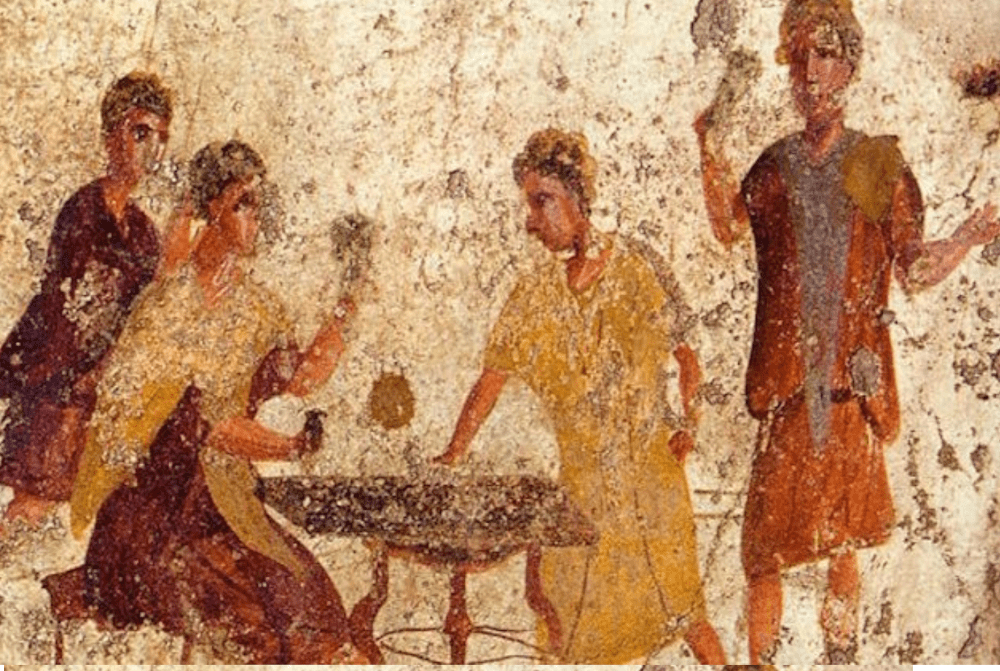THE ROMAN EMPIRE, WITH ITS UNMATCHED TECHNOLOGICAL AND INDUSTRIAL DEVELOPMENT, COULD HAVE LEFT A LESSER-KNOWN BUT WIDE-REACHING EFFECT TO EUROPE: LEAD POLLUTION. RECENT STUDIES SUGGEST THAT CHRONIC EXPOSURE TO THIS NEUROTOXIN MAY HAVE LOWERED THE AVERAGE IQ (IQ) OF POPULATIONS AT THE TIME, AFFECTING ENTIRE GENERATIONS
The empire of steel and lead: a toxic legacy
The Roman Empire, famous for its extraordinary cultural, architectural and political heritage, hides lesser-known but equally significant aspects for understanding its complexity: its environmental impact. Behind the grandeur of public works and imperial forums, lurk the consequences of an economy based on the intense extraction and processing of metals. In particular, industrial pollution linked to the smelting of lead and silver may have played a fundamental role in compromising the health of the population and progressively deteriorating the environment.
Scientific investigation in the Arctic ice
An investigation led by climate scientist Joe McConnell of Desert Research Institute of Reno, Nevada, and published on Proceedings of the National Academy of Sciences (PNAS), revealed the significant impact of Roman industrial activity on the global environment. Thanks to the ice analysis of Greenlandused as a natural archive of the atmosphere, it was possible to reconstruct the trend of atmospheric lead pollution between 100 BC and 200 AD, a period which corresponds to the peak of the expansion of the Roman Empire.
A natural archive of pollution
Greenland’s ice, stratifying over time, traps particles and gases present in the atmosphere at the time of their formation, creating a detailed record of environmental conditions from past eras. The analysis conducted highlighted a dramatic increase in lead levels in the atmosphere precisely coinciding with the maximum Roman mining activity. This toxic metal was a byproduct of refining silver and other metals, which were critical to the Roman economy.
Mining and the spread of pollution
Mining operations were mainly concentrated in the provinces of Hispania (now Spain) and Gaul, where the extraction and smelting of metals served to produce coins, tools and other objects essential to the functioning of the empire.
During smelting processes, lead was released into the atmosphere and transported by winds over long distances, even reaching remote areas such as the Arctic. However, the pollution didn’t just come from foundry fumes.
Roman elites extensively used lead tools and pipes to transport water. Amphorae and lead vessels were used to store and transport wine, oil and other goods, further aggravating exposure through direct ingestion.
The phenomenon did not exclusively concern the wealthier classes. Farmers, herders and rural populations were exposed to background pollution (minimum level of contamination detectable in a specific area), with airborne lead deposited on cultivated fields and in waterways. This vicious cycle of continuous contamination posed a threat to the entire imperial population.
But what damage does this metal cause and what was the impact on the health of our ancestors?
The impact of lead on the human body: between past and present
It is now widely recognized that lead, a highly toxic metal, poses a threat to human health even in minimal quantities. Once accumulated in the body, it settles in tissues and bones, interfering with neurological functioning.
In children, the consequences are particularly serious: the metal hinders brain development, impairs memory, concentration and learning ability. Even low levels of exposure can cause significant effects, with an estimated loss of 2.5-3 IQ points per individual.
And in the past? Analyzes conducted by McConnell and his team reveal that lead levels in the blood of children in Roman times were about three times higher than in children in the United States today, where the upper limit is set at 3.5 µg/ dl (micrograms per deciliter).
Using modern epidemiological models, scientists estimated that chronic lead exposure would have had far-reaching neurological effects, with widespread declines in cognitive abilities that may have slowed social and technological progress for generations.

Historical comparisons and long-term reflections
In the context of the Roman Empire, however, the effects may have been even more significant. A company’s collective intelligence profoundly impacts its ability to innovate and address complex challenges. Even a slight erosion of cognitive abilities on a population scale can translate into a substantial slowdown in technological and scientific progress.
Provinces such as Britain, Gaul and Iberia, epicenters of mining, may have suffered widespread cognitive decline which, combined with other social and political pressures, helped limit the potential for post-imperial development.
The devastating effects oflead exposure they are not limited to the Roman era. A similar situation occurred in the 20th century, when the use of leaded gasoline caused an average IQ drop of 5-6 points in the US population. Only with the progressive elimination of lead from fuel in the 1970s was there a drastic reduction in the levels of this metal in children’s blood
The legacy of Roman pollution
Some historians speculate that industrial pollution may have indirectly contributed to the decline of the Roman Empire, undermining the health and resilience of the population. A reduction in intellectual capacity, combined with political, economic and military challenges, could have progressively eroded the foundations of a seemingly invincible civilization.
In short, history demonstrates how the environmental impact of human activities can have long-term repercussions on public health and social progress.

